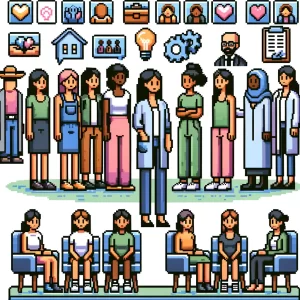
Understanding Suicide Tourism
In the face of terminal illness and unbearable suffering, some individuals seek a path that leads to a dignified end. While the concept of aid-in-dying, also known as assisted suicide, is controversial, it has been gaining traction worldwide. For Israelis, where such practices are prohibited, the solution often lies in traveling abroad—a phenomenon known as suicide tourism. A recent study explores into the experiences of Israelis who accompanied their loved ones on this poignant journey, shedding light on the complex emotions and challenges they faced.
The Heart of the Study
This study utilized a qualitative research design, conducting in-depth interviews with ten Israelis who supported a relative or close friend in their quest for assisted dying outside Israel. The findings revealed five central themes that capture the essence of their experiences:
- Facilitators for Supporting Suicide Tourism
- Choosing Death and Making the Decision
- The Meaning of Traveling to Die
- Offering Support Throughout the Process
- Facilitating Procedures After Death
Navigating the Path to Assisted Dying
One of the study’s most striking findings is the facilitators that enable family members to support their loved ones. Participants spoke about the autonomy and control exercised by those choosing to die. For example, one participant shared, “She was a very strong person, determined to deal with it alone and not be a burden on anyone.” This sense of control was crucial in their decision-making process, allowing them to dictate their end-of-life terms rather than succumbing to their illness.
However, the journey was not without its emotional turmoil. Families grappled with conflicting emotions and societal pressures. A poignant example comes from a participant who recounted their experience with religious condemnation, “I told a co-worker about the plan, and he said, ‘You know that you are a killer.'”
The Decision to Die
Choosing to end one’s life is a deeply personal decision, often fraught with ambivalence. Many participants shared that discussing death and dying was a regular part of their family conversations. This familiarity with the concept of death made it somewhat easier to accept their loved one’s decision. Yet, the emotional weight of this choice was palpable. One participant noted, “End-of-life decisions include everything: psychology, morality, and religion.”
Despite the complexities, having a clear plan brought relief to both the individual and their family. The meticulous planning allowed for meaningful goodbyes and cherished final moments together. “We visited places from her childhood, and it was a beautiful way to spend her last days,” recalled one family member.
The Journey Abroad
Traveling abroad for assisted dying adds another layer of complexity. Participants detailed the bureaucratic hurdles, financial burdens, and the emotional strain of leaving some family members behind. One poignant story involved a participant who had to leave their mother and sister behind in Israel, hearing their cries as they departed. “It was easier for me because I was busy doing things. They only had the stress of waiting,” the participant explained.
Despite these challenges, many saw the journey as a way to ensure a dignified death. It allowed individuals to die on their terms, surrounded by love and support, rather than in isolation or through violent means. This aspect of control and dignity was a recurring theme in the participants’ narratives.
Offering Support and Facing the Aftermath
Support from loved ones was essential throughout this journey. Whether it was handling paperwork, providing emotional support, or being present at the moment of death, the participants took on various roles. One participant vividly described holding the glass of medication for their loved one, “She was very goal-oriented… and within 30 seconds, she wasn’t with us anymore.”
However, this support came at a personal cost. Many participants felt the need for their own support systems, citing conversations with friends, family, or even anonymous calls to counseling services. The study highlights the importance of structured support for those who accompany loved ones on such journeys.
The Aftermath: Facilitating Procedures and Dealing with Reactions
Upon returning home, participants faced a mix of reactions from their communities. Some received praise for their bravery, while others encountered criticism and disbelief. One participant shared, “During the Shivah, people started expressing their opinions, like ‘He wasn’t that sick. He didn’t have to travel…'”
The process of arranging the return and burial of their loved ones was another significant challenge. The participants had to navigate various bureaucratic processes, often under emotional duress. Despite these difficulties, they found solace in the rituals of mourning, which provided closure and support from their community.
Join the Conversation
This study opens up a crucial dialogue about the role of family and friends in assisted dying and the unique challenges of suicide tourism. As you reflect on these findings, consider the following questions:
- Have you ever faced a difficult decision regarding end-of-life care for a loved one? How did you navigate the emotional and ethical complexities?
- What are your thoughts on the concept of suicide tourism? Do you believe it provides a dignified solution for those suffering from terminal illnesses?
We invite you to share your experiences and impressions in the comments below or on our social media channels. Your stories and perspectives are invaluable in shaping a compassionate and informed discussion on this sensitive topic.
Conclusion
The study provides a profound look into the lives of those who support their loved ones in seeking a dignified end through suicide tourism. It highlights the emotional and logistical challenges they face and underscores the need for comprehensive support systems. As public health practitioners and researchers, understanding these experiences is crucial in developing compassionate and effective policies and practices.
Be Part of the Change – Get Weekly Updates!
Stay informed and connected. Subscribe for free and share this blog to make a difference in public health with others.



